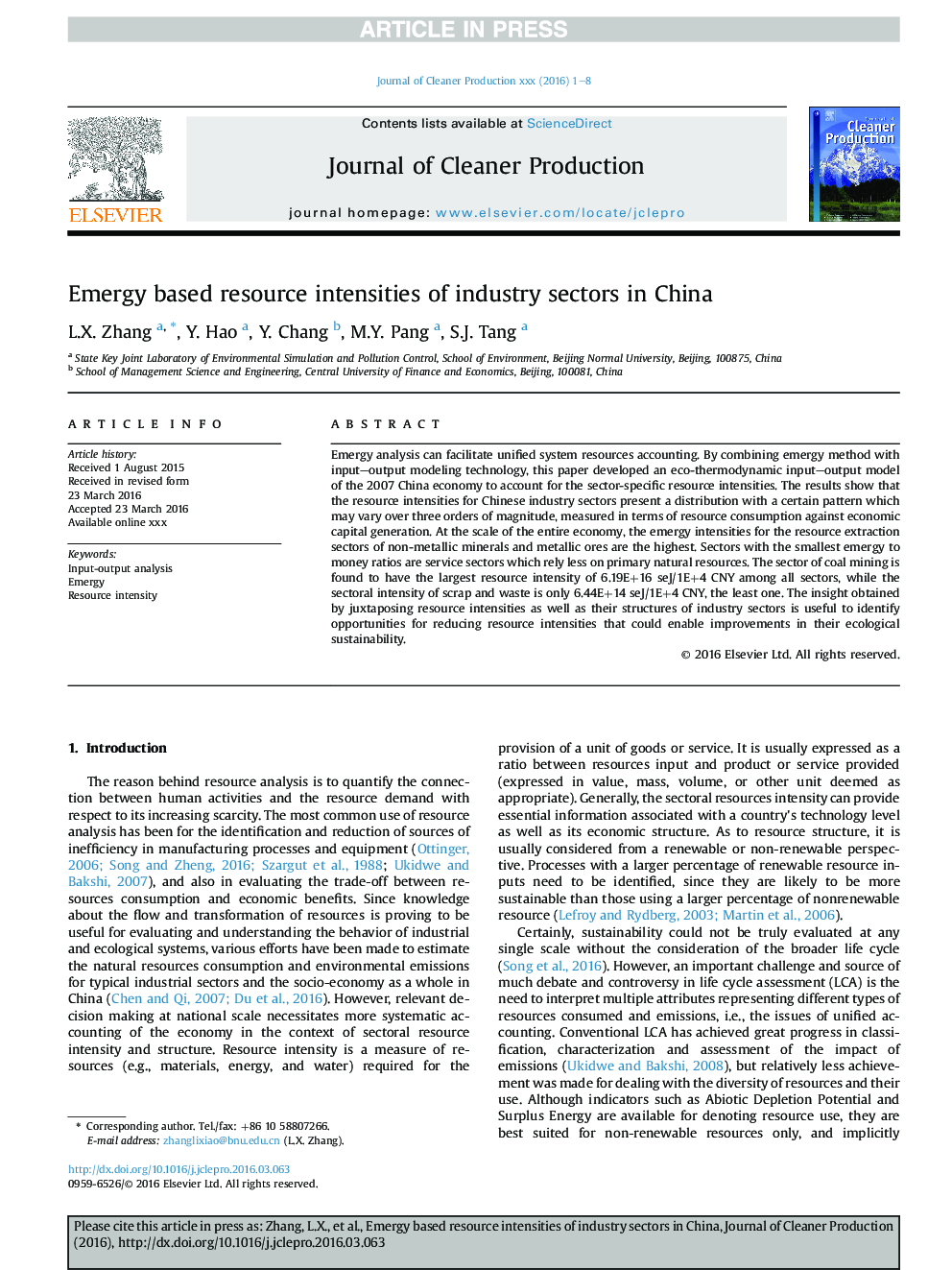| کد مقاله | کد نشریه | سال انتشار | مقاله انگلیسی | نسخه تمام متن |
|---|---|---|---|---|
| 5481242 | 1399330 | 2017 | 8 صفحه PDF | دانلود رایگان |
عنوان انگلیسی مقاله ISI
Emergy based resource intensities of industry sectors in China
ترجمه فارسی عنوان
شدت منابع مبتنی بر امراض از بخش های صنعت در چین
دانلود مقاله + سفارش ترجمه
دانلود مقاله ISI انگلیسی
رایگان برای ایرانیان
کلمات کلیدی
تجزیه و تحلیل ورودی-خروجی، ایمان، شدت منابع،
موضوعات مرتبط
مهندسی و علوم پایه
مهندسی انرژی
انرژی های تجدید پذیر، توسعه پایدار و محیط زیست
چکیده انگلیسی
Emergy analysis can facilitate unified system resources accounting. By combining emergy method with input-output modeling technology, this paper developed an eco-thermodynamic input-output model of the 2007 China economy to account for the sector-specific resource intensities. The results show that the resource intensities for Chinese industry sectors present a distribution with a certain pattern which may vary over three orders of magnitude, measured in terms of resource consumption against economic capital generation. At the scale of the entire economy, the emergy intensities for the resource extraction sectors of non-metallic minerals and metallic ores are the highest. Sectors with the smallest emergy to money ratios are service sectors which rely less on primary natural resources. The sector of coal mining is found to have the largest resource intensity of 6.19E+16 seJ/1E+4 CNY among all sectors, while the sectoral intensity of scrap and waste is only 6.44E+14 seJ/1E+4 CNY, the least one. The insight obtained by juxtaposing resource intensities as well as their structures of industry sectors is useful to identify opportunities for reducing resource intensities that could enable improvements in their ecological sustainability.
ناشر
Database: Elsevier - ScienceDirect (ساینس دایرکت)
Journal: Journal of Cleaner Production - Volume 142, Part 2, 20 January 2017, Pages 829-836
Journal: Journal of Cleaner Production - Volume 142, Part 2, 20 January 2017, Pages 829-836
نویسندگان
L.X. Zhang, Y. Hao, Y. Chang, M.Y. Pang, S.J. Tang,
